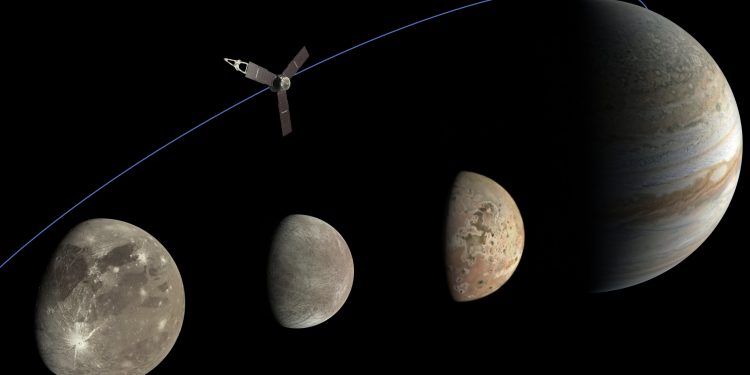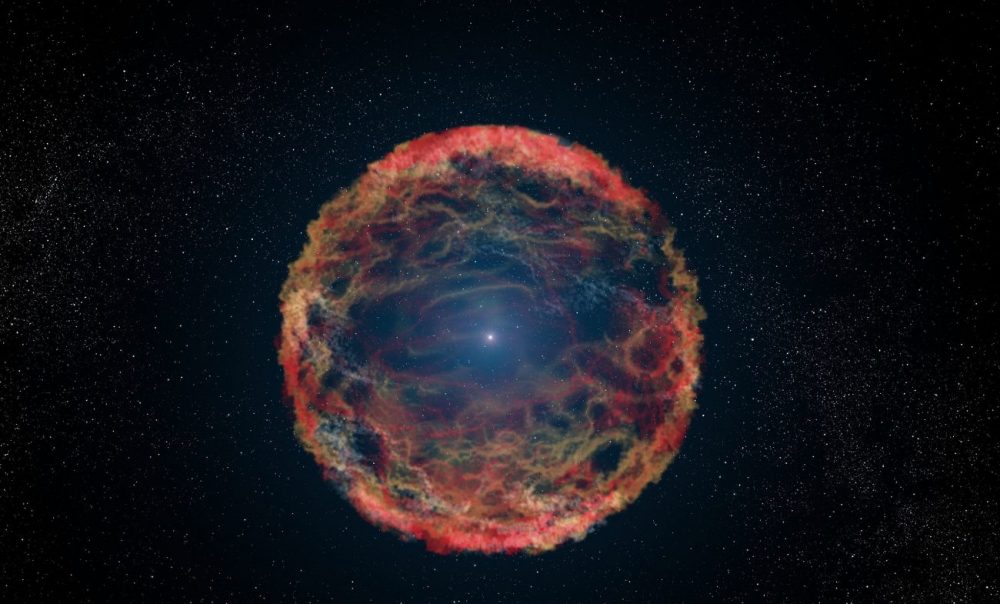Jupiter’s moon Io, the most volcanically active body in the solar system, is a scorching landscape that may hold the key to understanding how planetary interiors generate heat. By studying this hellish environment, Cornell University astronomers have uncovered insights into tidal heating, a process that plays a crucial role in shaping celestial bodies throughout the universe.
Tidal heating occurs when gravitational forces exert pressure on a planetary body, causing internal friction and heat. According to Alex Hayes, Professor of Astronomy at Cornell, this mechanism “is essential for warming and driving the orbital evolution of celestial bodies.” Tidal heating is thought to play a significant role in sustaining subsurface oceans on moons orbiting giant planets like Jupiter and Saturn, possibly even creating conditions favorable for life.
Io’s intense volcanic activity, fueled by tidal forces from Jupiter, is offering scientists a unique window into these processes. Leading the research, Madeline Pettine, a doctoral student in astronomy, emphasizes that “studying Io’s extreme landscape is not just about volcanoes. It’s about understanding how heat is generated and whether this knowledge could help us identify life-supporting environments on other moons.”
A Surprising Discovery at Io’s Poles
Using data collected from NASA’s Juno spacecraft, Pettine and her team analyzed Io’s volcanic landscape, focusing on the distribution and intensity of volcanic heat. Through advanced imaging from Juno’s Jovian Infrared Auroral Mapper (JIRAM), the researchers discovered something unexpected: a significant concentration of active volcanoes near Io’s poles, regions previously thought to be less volcanically active.
“We anticipated more volcanic activity at the equator,” says Pettine, “but finding these clusters at the poles challenges existing models of how heat is distributed within Io.”
Among the prominent volcanoes observed were Asis, Zal, Tonatiuh, and Loki in the northern hemisphere, which exhibited synchronized brightening and dimming patterns. In the south, volcanoes such as Kanehekili and Uta were found to be similarly active.
These findings could offer new perspectives on how heat is generated and distributed across volcanic worlds. Pettine’s research highlights that “by understanding heat flow on Io, we might better grasp tidal heating processes on icy moons like Europa or Enceladus, where subsurface oceans could harbor life.”
Tidal heating mechanisms
While Io’s surface is far too hostile to support life, its volcanic activity is shedding light on tidal heating mechanisms that may sustain life beneath the ice shells of other moons. Moons like Europa, which are believed to have subsurface oceans warmed by tidal forces, are prime candidates for future exploration.
“We’re not solving the mystery of tidal heating with this one study,” Pettine notes, “but it’s a step closer to understanding how heat generation works on these moons, and whether that heat could maintain conditions necessary for life.”
Understanding how heat is generated in these extreme environments could be a game-changer for astrobiology. The findings from Io may help inform future missions to moons like Europa and Enceladus, where tidal heating could keep oceans liquid and potentially support microbial life.
This groundbreaking study opens the door to further research on how tidal forces shape planetary bodies across the solar system. As scientists continue to analyze data from Juno’s flybys, they hope to refine their models of tidal heating and apply these insights to other celestial bodies.











